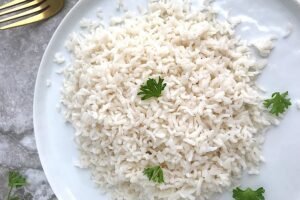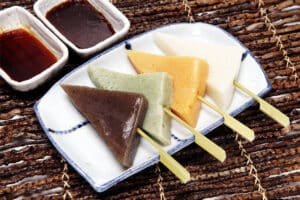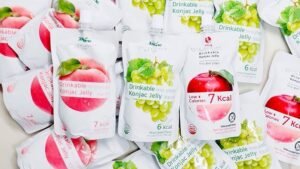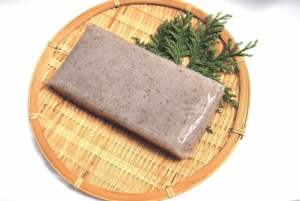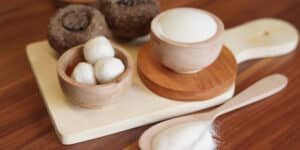
The Ultimate Guide to Organic Konjac: Benefits and Cultivation
- admin
- 29 7 月, 2024
- 9:47 上午
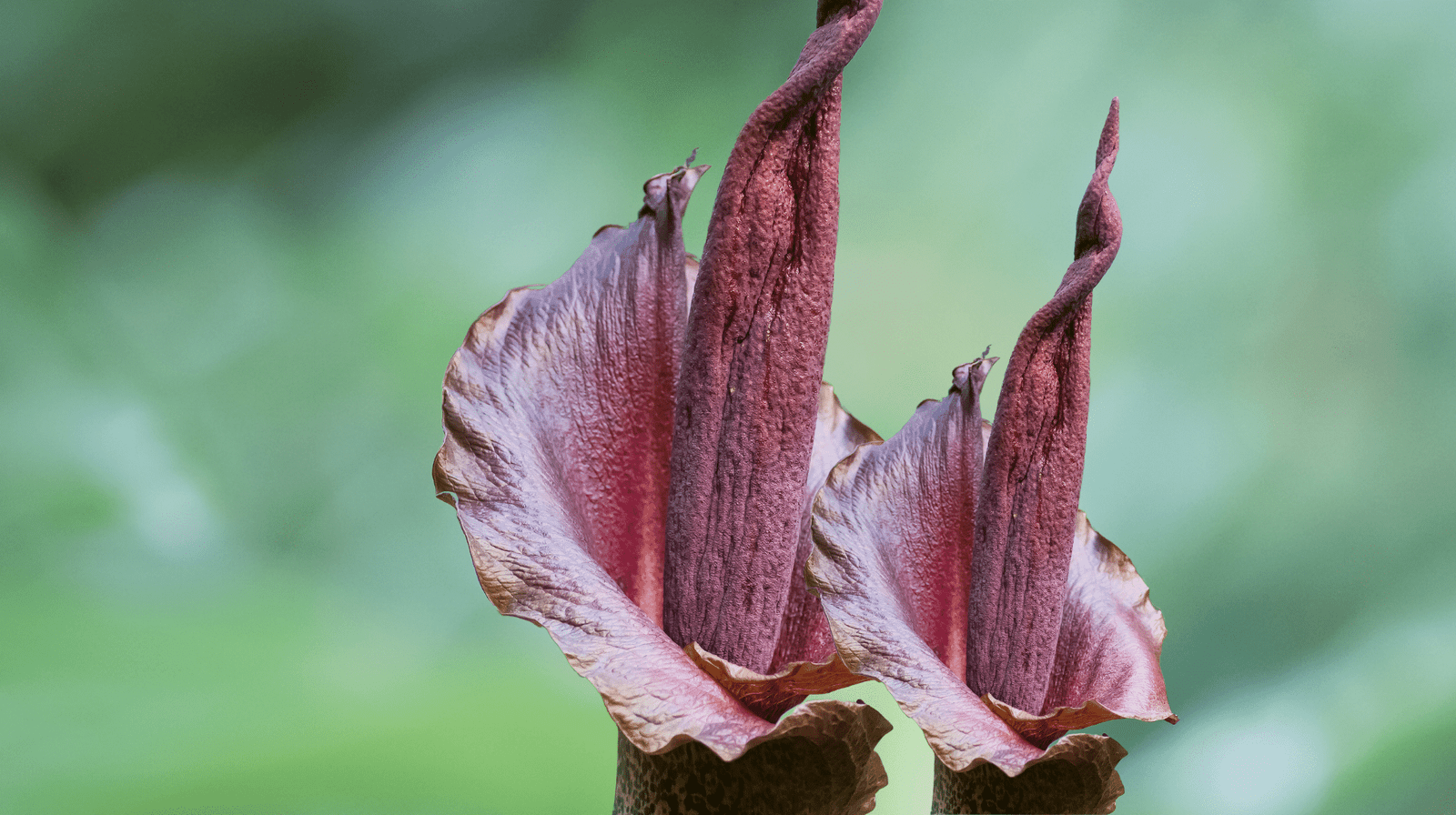
Table of Contents
Organic Konjac, a plant native to Asia, is gaining popularity for its remarkable health benefits and culinary versatility. Known scientifically as Amorphophallus Konjac, this plant has been a staple in Asian cuisine for centuries. Its roots are the primary source of glucomannan, a dietary fiber praised for its numerous health benefits.
What is organic Konjac?
Amorphophallus Konjac is a fascinating tuberous perennial belonging to the Araceae family. This plant has a unique and striking appearance with its large, umbrella-like leaf that can grow up to 1.3 meters in diameter. The Konjac plant produces a single, tall flower spike known as an inflorescence, which emits a distinctive odor to attract pollinators.
Brief history and cultural significance of organic Konjac
Konjac has long been used in traditional Asian dishes such as shirataki noodles and vegan gelatin. In Japan, it is often called the “devil’s tongue” due to its unique appearance. Historically, Konjac has been valued not only for its culinary uses but also for its medicinal properties.
Understanding the health benefits and culinary versatility of organic Konjac can inspire you to incorporate it into your diet. Whether you’re looking to manage your weight, improve digestion, or explore new flavors in your cooking, organic Konjac offers a wealth of possibilities.
Health benefits of organic Konjac
The Konjac plant has gained popularity in recent years due to its numerous health benefits. This section examines those benefits in detail, exploring their dietary and medicinal advantages.
Nutritional profile of organic Konjac
Konjac is a powerhouse of nutrition, particularly known for its high fiber content and essential minerals. The primary component, glucomannan, is a water-soluble dietary fiber that contributes significantly to the health benefits of Konjac. This low-calorie ingredient is also rich in minerals such as calcium, magnesium, and phosphorus. These minerals play a crucial role in maintaining bone health, muscle function, and overall well-being.
How Glucomannan aids in weight loss and appetite control
One of the standout health benefits of Konjac is its role in weight management. Glucomannan, a soluble fiber found in Konjac, absorbs water and expands in your stomach, creating a sense of fullness that effectively helps control appetite. This can be particularly beneficial for those aiming to reduce calorie intake without feeling deprived, as it assists in curbing hunger and supporting a balanced, healthier diet.
Impact on Cholesterol levels and blood sugar regulation
Studies have demonstrated that glucomannan can help lower cholesterol levels by binding to bile acids in the gut. This binding process reduces the reabsorption of cholesterol into the bloodstream, leading to improved cardiovascular health. Additionally, organic Konjac aids in regulating blood sugar levels by slowing the absorption of carbohydrates, which helps prevent spikes in blood glucose and promotes stable energy levels.
Probiotic and prebiotic effects on digestive health
Konjac acts as both a probiotic and prebiotic, significantly supporting gut health by promoting the growth of beneficial bacteria. Its high fiber content aids in smoother digestion and helps prevent constipation. For individuals with gluten sensitivities, Konjac offers a valuable alternative. Notably, Konjac flour is naturally gluten-free, making it an ideal choice for those following a gluten-free diet. This makes Konjac a versatile and health-conscious option for improving digestive health while accommodating dietary restrictions.
Incorporating Konjac into your meals can be simple with products like zero-calorie rice or shirataki noodles. These not only offer substantial health benefits of Konjac but also fit seamlessly into various culinary traditions without compromising on taste or texture.

Cultivation techniques for organic Konjac plants
The Konjac plant thrives in subtropical and tropical regions of Asia, particularly in countries like Japan, China, and Indonesia. It offers a rewarding experience for home gardeners. Follow these essential steps to successfully cultivate and care for Amorphophallus Konjac :
- Planting: Begin by selecting healthy corms, which are the bulb-like structures from which the plant grows. Opt for corms that are firm and free from blemishes to ensure robust plant development.
- Growth period: The growth period for Konjac typically lasts between 7 to 9 months. During this time, it is crucial to monitor moisture levels carefully and provide adequate sunlight. Consistent care during this period supports optimal growth and health of the plant.
- Harvesting: Harvesting is done once the leaves naturally die back, usually in late autumn. At this stage, dig up the corms gently to avoid damage. Proper harvesting ensures that the corms, which are essential for future planting or consumption, are collected in their best condition.
By following these cultivation techniques, gardeners can successfully grow and maintain healthy organic Konjac plants, reaping the benefits of this versatile and beneficial plant.
Ideal growing conditions
Understanding and providing these optimal conditions is essential for the successful cultivation and care of Amorphophallus Konjac, whether in a commercial setting or a home garden. This plant’s adaptability to various environments makes it valuable for both culinary and decorative purposes.
To thrive, Konjac plants require specific growing conditions:
- Soil types: Konjac plants need well-draining soil to prevent root rot. A sandy loam mix enriched with organic matter is ideal, providing the right balance of drainage and nutrients.
- Moisture requirements: Consistent moisture is crucial for Konjac, but it’s important to avoid waterlogging. The plant thrives in high humidity levels, which mimic the moist forest understory of its native habitat.
- Light exposure: Konjac plants prefer partial shade to full sun. Filtered sunlight is best, as it closely resembles their natural environment, allowing them to grow optimally without being exposed to harsh, direct sunlight.
By ensuring these specific conditions, gardeners can create a conducive environment for organic Konjac plants, promoting their health and growth.
Detailed care techniques
Achieving optimal growth in your Konjac plant requires attentive care and proper maintenance. During the growing season, which spans from spring to early autumn, it’s essential to apply a balanced fertilizer every 4-6 weeks. Organic options such as compost or well-rotted manure are excellent choices for enriching the soil. Mulching is also beneficial, as it helps retain soil moisture and suppress weeds, contributing to a healthier plant environment. Regular pest management is crucial; inspect your plant for common pests like aphids and treat it with organic insecticidal soap if needed. By consistently monitoring and adhering to these Amorphophallus konjac care techniques, you can ensure a healthy and productive konjac plant.
Culinary uses and easy recipes with Konjac noodles or flour
Cooking with Konjac noodles or flour offers a versatile array of options that cater to both health-conscious individuals and food enthusiasts. Popular forms include:
- Shirataki noodles: Often referred to as “miracle noodles,” these translucent, gelatinous noodles are made from Konjac yam. They are low in calories and carbohydrates, making them an excellent substitute for traditional pasta.
- Konjac flour: This flour can be used to create vegan gelatin or low-carb pasta alternatives. It’s perfect for those looking to reduce their carb intake without sacrificing texture or flavor.
Incorporating organic Konjac into daily meals is simple and rewarding:
- Stir-fries: Swap out regular noodles with shirataki noodles in your favorite stir-fry recipes. Their neutral taste absorbs flavors well, ensuring a delicious and satisfying meal.
- Soups: Use Konjac flour to thicken soups without adding extra calories. This adds a hearty texture while keeping the dish light.
- Baking: Integrate Konjac flour into gluten-free baking recipes. Its high fiber content helps maintain moisture, resulting in soft and fluffy baked goods.
- Salads: Add cooked shirataki noodles to salads for an interesting twist on traditional greens, enhancing both the visual appeal and nutritional value of your dish.
Experimenting with cooking with Konjac noodles or flour can transform everyday meals into nutritious culinary delights, offering endless possibilities for healthful eating.
Looking to buy Konjac products in bulk?
If you’re in search of high-quality Konjac products in bulk, look no further than Konjac Bites! Specializing in Shirataki noodles and other Konjac-based products, Konjac Bites is your go-to wholesale supplier for reliable and premium options. Whether you’re stocking up for a restaurant, store, or personal use, we offer exceptional quality and service. Visit Konjac Bites today to explore our range and place your bulk order!
To learn more about the advantages of Konjac and how it can enhance your health benefits, read our next article: Konjac for Diabetes: Benefits, Usage, and Considerations
Frequently Asked Questions
What are the health benefits of consuming glucomannan from organic konjac?
Glucomannan, a dietary fiber found in organic konjac, offers several health benefits including aiding in digestion, promoting weight loss by enhancing feelings of fullness, and helping to regulate cholesterol levels and blood sugar.
Can I successfully grow and care for Amorphophallus konjac in my garden without prior experience?
Yes, even beginners can grow and care Amorphophallus konjac at home without a lot of experience. With the right conditions and care techniques, you can cultivate this plant successfully.
What are the ideal growing conditions for konjac plants?
Konjac plants thrive in well-draining soil with high humidity levels. They prefer partial shade or filtered sunlight to achieve optimal growth.
How should I plant konjac corms in my garden?
Plant corms in spring after the last frost. Space them about 12 inches apart to allow for adequate growth and airflow.
What care techniques should I follow for optimal growth of my konjac plants?
Ensure consistent moisture for your konjac plants but avoid waterlogging. It’s important to monitor soil moisture levels and provide balanced nutrients to support healthy development.



